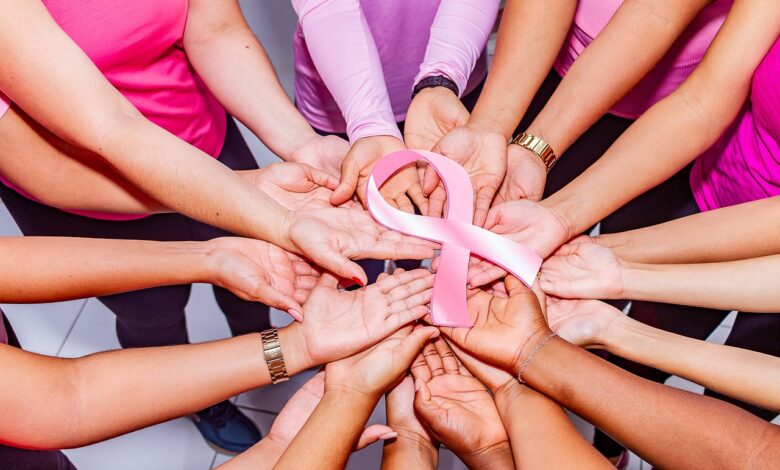
Shedding Light on the Most Common Cancer among Women and its Impact on Men
Every October, the world turns pink to raise awareness about breast cancer, a disease that affects millions of women and men, worldwide. According to Breastcancer.org, the disease accounts for 12.5% of all new annual cancer cases worldwide, making it the most common cancer in the world.
Breast cancer is the most common cancer among women globally, with a staggering one in eight women being diagnosed in their lifetime. In the United States alone, an estimated 281,550 new cases were diagnosed in 2022. But it’s not just women who are affected; men can develop breast cancer too, though it is less common, with about 2,650 cases in the same year.
A global health campaign called “breast cancer awareness” which was first rolled out in 1985 as a week-long event, has today turned into a month-long awareness drive, globally. It
aims to inform people about breast cancer, including its risk factors, early identification, available treatments, and support for those who are impacted by the disease. Breast cancer awareness has experienced significant growth and success in recent years, making more people around the world aware of the disease and its implications. This heightened awareness is due to several factors like early detection campaigns, the Pink Ribbon Movement, Celebrities and advocates, advances in medical science, education initiatives in schools, and global campaigns
Breast Cancer in Men: A Less Common but Real Concern
Breast cancer in men is often overlooked, but it’s important to recognize that it can and does affect them. The American Cancer Society estimates that about 1 in 833 men will be diagnosed with breast cancer in their lifetime. It is crucial for men to be informed about their risk and to engage in breast cancer awareness and prevention.
Breast Cancer Awareness for Men: Breaking the Stigma
While breast cancer awareness campaigns primarily target women, the need to raise awareness among men is equally important. Many men are unaware of their risk or the need for early detection. Awareness campaigns for men often focus on dismantling stigmas associated with male breast cancer and encouraging open dialogue.
Advancements in the Science of Breast Cancer
While the incidence of breast cancer is high, advancements in science have significantly improved the prognosis and treatment outcomes. Breast cancer research has led to targeted therapies, early detection methods, and improved survival rates. Many women now go on to lead healthy lives post-treatment.
Genetic testing, for instance, has become a valuable tool in identifying individuals at higher risk, allowing for proactive preventive measures. Treatments have become more personalized, making them more effective while minimizing side effects.
When to Worry: Self-Check and Early Detection
For breast cancer to be successfully treated, early detection is essential. As advised by their healthcare providers, women and, in certain situations, men, are encouraged to do routine clinical breast exams and mammograms in addition to performing breast self-examinations on a regular basis.
It’s critical to recognize the warning signs and symptoms of breast cancer. These could include soreness, nipple discharge, skin changes on the breast, breast lumps, and changes in breast size or shape. It is imperative to seek medical attention as soon as any of these symptoms are observed.
Making educated decisions regarding one’s health can be facilitated by knowledge of the risk factors associated with breast cancer. Certain risk factors—like age and genetics—cannot be altered, while others—like food preferences and lifestyle choices—can be altered to lower the risk.
Breast cancer is diagnosed and screened by using mammograms and other imaging tests. Additional diagnostic procedures, including a biopsy, can be required if an anomaly is found in order to confirm the existence of cancer.
Treatment for breast cancer varies based on the kind and stage of the disease, although it frequently combines hormone therapy, radiation therapy, chemotherapy, surgery, and targeted therapy. To create a customized treatment plan, patients and their healthcare team should collaborate closely.
Campaigns to raise awareness of breast cancer also stress the value of social and emotional support for those who are impacted by the disease and their family. Patients and their loved ones can get services, information, and support from a variety of organizations.
Numerous organizations and efforts to promote awareness about breast cancer collect money to fund patient services, awareness campaigns, and research. Individuals can make a difference by offering their time, making donations to respectable organizations, or taking part in fundraising activities.
Early detection is key to successful treatment. Here are some self-check tips and signs to look out for:
1. Breast Self-Exams: Perform a monthly breast self-exam to check for lumps, changes in size, shape, or texture. Stand in front of a mirror and look for any dimpling, puckering, or changes in the skin. Raise your arms above your head to check for any abnormalities.
2. Mammograms: Starting at around the age of 40, women should undergo regular mammograms. If you have a family history of breast cancer or other risk factors, your healthcare provider may recommend starting earlier or having additional tests.
3. Signs and Symptoms: Be aware of any unusual changes in your breasts, such as lumps, swelling, redness, or nipple discharge. If you notice any of these changes, consult your healthcare provider promptly.
4. Know Your Family History: If you have a family history of breast cancer, inform your healthcare provider, as this may influence your screening schedule.
Remember, not all lumps or changes are cancerous, but it’s essential to have them evaluated by a medical professional.
Breast cancer awareness drives have come a long way in educating and empowering women. While the disease remains common, science and early detection strategies continue to make remarkable progress in fighting this battle. By staying informed and vigilant, we can all contribute to reducing the impact of breast cancer on our lives.




